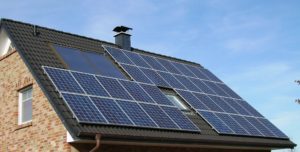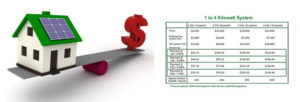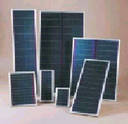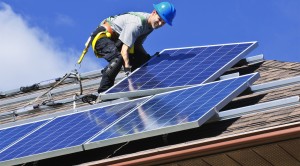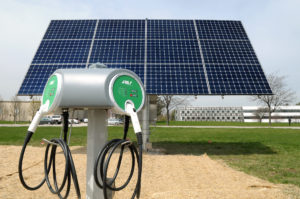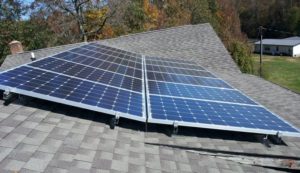 The DC to AC inverter converts the DC electricity into AC electricity. AC Electricity is the kind of electricity used to power the appliances in your home.This web site is aimed at finding solutions for consumers to use in their homes and one of the first things we have come to realize is that it is not easy to find solutions that are easy to find and easy to implement.
The DC to AC inverter converts the DC electricity into AC electricity. AC Electricity is the kind of electricity used to power the appliances in your home.This web site is aimed at finding solutions for consumers to use in their homes and one of the first things we have come to realize is that it is not easy to find solutions that are easy to find and easy to implement.
One web site we read compared buying a solar solution to buying a car. Would you design the engine, the transmission etc or do you go in and purchase a car with a few identified options that are easy to figure out? The latter of course and that is one of the things that is currently wrong about solar panel solutions.
Most consumers do not understand anything about kilowatts, power, current, converters from DC to AC and so on. What is needed in the industry are solutions for customers to chose from. Perhaps standard configurations that deliver solution’s that consumers and homeowners are looking for. In much the same way that a furnace is sold with sufficient heating capability for a 2500 square foot house, a solar panel installation should be sold in such a way that an installation could replace all or a percentage of your power usage.
Solar Power Solutions – How Many Panels Do I Need
I have no idea nor do I really want to try and figure this out. Even if I was given a formula to use, the average consumer like me is not going to be confident that they are making the right calculations. What are my alternatives? Hire an expert which costs money as well and I am still not sure what the final solution is that I need. Just look at the picture on the right with all the different sizes ! With such new technology you can be sure that what you buy today will be updated and changed within 6 months.
How would I mount these on the roof and is this the right location to put them in? What is the optimum direction to face them towards and do I need to clean them once and awhile or are they maintenance free. I really do not want to get up on the roof very often to clean these things. I can only assume that dirt and grime that accumulates on the surface will cause the amount of power they generate to decrease over time.
What is a DC to AC Converter?
The DC to AC inverter converts the DC electricity into AC electricity, the kind of electricity used to power the appliances in your home. This is the same power that you can sell to the commercial power provider in your area or at least this is what many web sites say.
Were should this inverter be installed; are there any cooling requirements; special mounting requirements; electrical inspections required; approvals from the company providing power before you can connect to the grid? Devices such as these come with various power capacities . What size do I need to accommodate the amount of power that I am generating? This is an example of a component that must be sized to fit the system that you are installing.
Do I need a Controller
Apparently using an optional charge controller with a DC circuit breaker is required to manage the charging of batteries that can be used for backup purposes. The controllers use DC power from the solar modules to charge the battery bank. Do the controllers protect the batteries against overcharging and what happens at night? Will the batteries then discharge back through the solar panels?
Who Wants batteries
This were the solution issue really comes to a head. What problem am I trying to solve?
- Solar power generation for backup in case of electrical system failure?
- Alternative power generation to reduce my electrical power cost
- Generating income by selling power to the electrical grid
- All three solutions?
Depending on the answer, I will need batteries especially for the backup solution. As a result you have to have something to store the power in if you want a backup solution. As a result that usually means batteries somewhere in the basement. They need to be designed, sized, purchased and maintained! Who wants that in your home?
Solar Power Solutions – Installation
This is not an easy thing to install. For example first you must install the solar panels somewhere. They usually go on the roof, which means you risk roof damage. Hence wiring and cabling must then run down from the roof to the basement. Or wherever you are installing the inverter, the batteries and perhaps connecting to the electrical grid.
The wiring must be installed and inspected by an electrician. While the roof installation should be installed by experts who are not going to wreck your roof.
Conclusion
As we research this topic to find out more information, it is obvious at this time that the solar generation solutions for consumers is just getting started. There are not a lot of simple solutions for the average consumer. We have not factored in prices as of yet. But since the industry is still in it’s infancy, this usually means that prices are not anywhere near commodity type pricing.
Comments are welcome and help with finding solutions for consumer related installations. for posts about solar power solutions, click here.
Save
 Why solar power will change traditional power systems and when is the big question facing electrical generation companies, transmission companies, and investors? Utilities in the power generation and transmission business have been cash cows for investors for years. Many investors are beginning to wonder if their cash dividends are at risk. The quick answer is that it depends on how the existing companies respond to this new source of power. How do they manage the environmental impact message for the new and old systems? There is no question that there is less air pollution from solar and wind farm generation compared to coal, oil, and natural gas-fired generation plants. There is a lot of pressure to have a higher percentage of generation come from these sources as time goes on.
Why solar power will change traditional power systems and when is the big question facing electrical generation companies, transmission companies, and investors? Utilities in the power generation and transmission business have been cash cows for investors for years. Many investors are beginning to wonder if their cash dividends are at risk. The quick answer is that it depends on how the existing companies respond to this new source of power. How do they manage the environmental impact message for the new and old systems? There is no question that there is less air pollution from solar and wind farm generation compared to coal, oil, and natural gas-fired generation plants. There is a lot of pressure to have a higher percentage of generation come from these sources as time goes on.